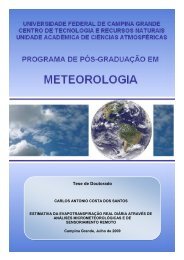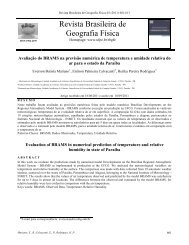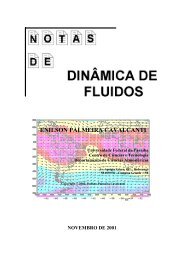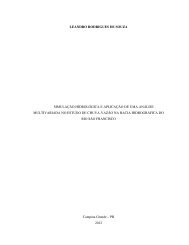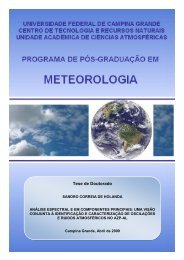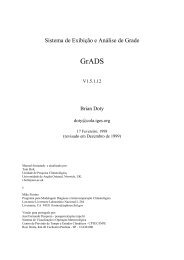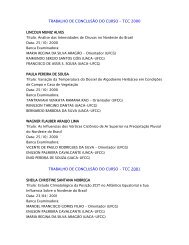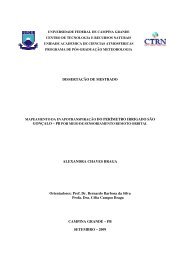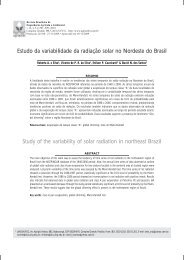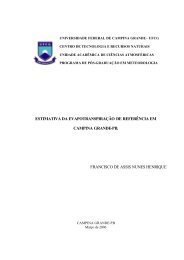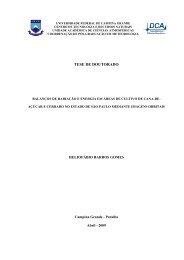Create successful ePaper yourself
Turn your PDF publications into a flip-book with our unique Google optimized e-Paper software.
The pink-circled field is darker than other fields in the area (see Figure 9). It is possible thatthis field is not a bare field but is partially covered with dark desert-type vegetation.Fig.9. P40/R30, Landsat 7 ETM+ 4/8/2000, true color image, x/y = 442873/179798.We decide that the best candidate for the “hot” pixel in the northwest region is the yellowcircledfield (302.7 K).Next, we will look at the southeast region (Figure 10).Fig.10. P40/R30, Landsat 7 ETM+ 4/8/2000, Colored T s image (300K:Blue to 306K:Red,307K:light blue, 308.5K:yellow, and 310K: pink). The coordinates of the cursor are x/y =518565/159301. (Note that the cross-hairs point to the eastern part of the city of Burley.Cities should be avoided during anchor pixel selection).It appears that this region is hotter than the northwest region. The light blue, yellow andpink areas are where the temperature is 307-310 K. which is much hotter than our previous“hot” pixel candidate (302.7 K) selected from the other area. This is explained as follows:1) The regional weather or soil conditions are different between the northwest and southeastregions of this image. If so, we might think about separating the image into two areas,since <strong>SEBAL</strong> assumes that the regional weather is relatively uniform within the area ofinterest.76



